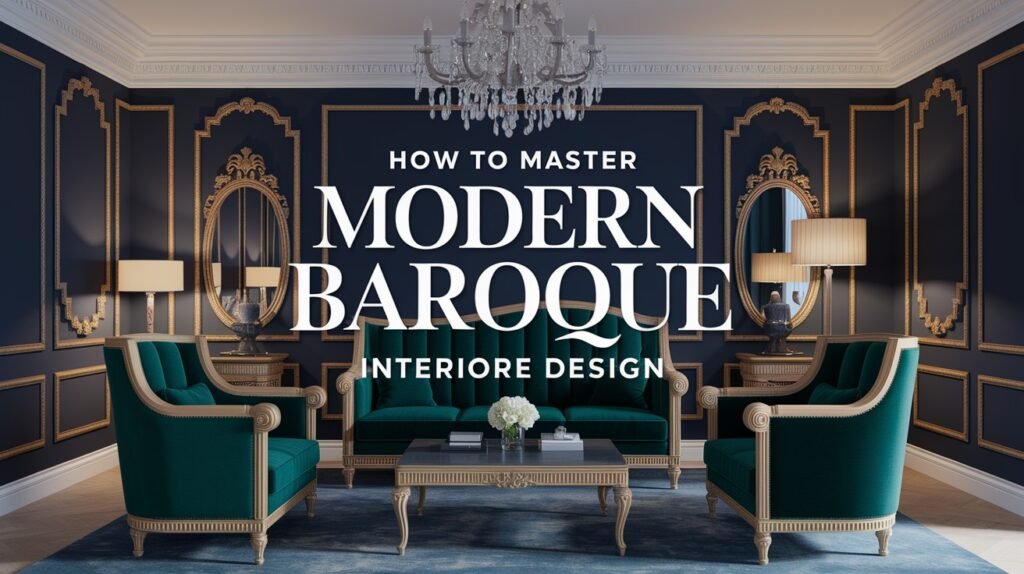Modern baroque interior design brings the grandeur of 17th-century palaces into today’s homes. This style combines the original baroque elements like rich colors, ornate details, and luxurious materials with contemporary minimalism.
Homeowners are drawn to this fusion because it offers the best of both worlds. You get the drama and sophistication of traditional baroque without the overwhelming heaviness.
Today’s version keeps the visual impact but reduces the excess. Instead of filling every corner with ornate pieces, you choose focal points carefully. A single carved mirror makes more impact than five smaller decorative items.
The key lies in balance. Think of it as controlled opulence.
To master modern baroque interior design, you’ll need to understand when to go bold and when to pull back. This approach creates spaces that feel luxurious yet comfortable for daily living.
Understand the Foundations of Baroque Style
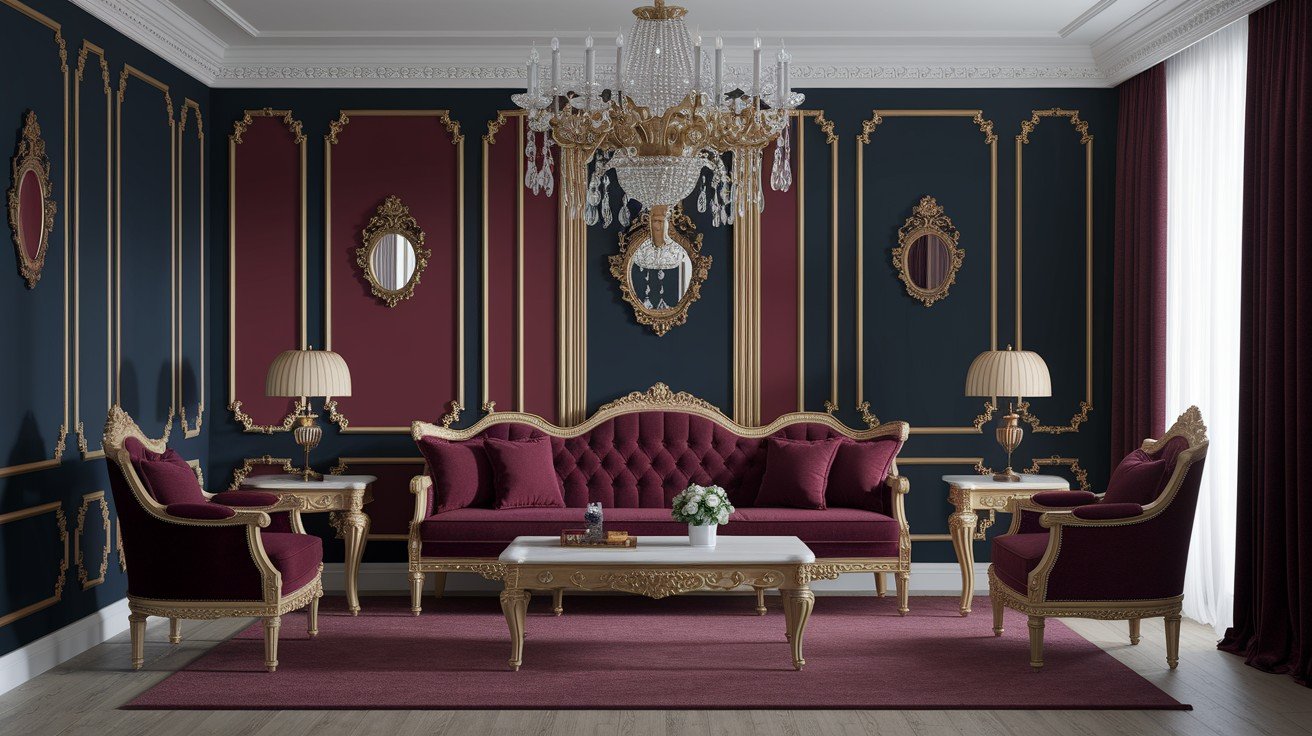
Baroque design emerged in 17th-century Europe as a symbol of power and wealth. The style emphasized three core principles: symmetry, grandeur, and intricate detail. Every element served to impress visitors and display the owner’s status.
Traditional baroque rooms featured heavy furniture, dark wood, and elaborate carvings. Gold leaf covers everything from picture frames to ceiling moldings. Rich tapestries hung on walls, while crystal chandeliers dominated overhead.
Modern baroque takes these elements and refines them.
The evolution happened gradually. As homes became smaller and lifestyles more casual, designers began adapting baroque elements. They kept the luxury but made it more accessible and practical for contemporary living.
Modern Baroque Style Guide
Modern Baroque Style Guide blends 17th-century opulence with contemporary minimalism. This design combines rich jewel tones, luxurious velvets, and gold accents with clean lines. Statement pieces create dramatic sophistication in livable spaces.
Step 1: Choose a Bold, Regal Color Scheme
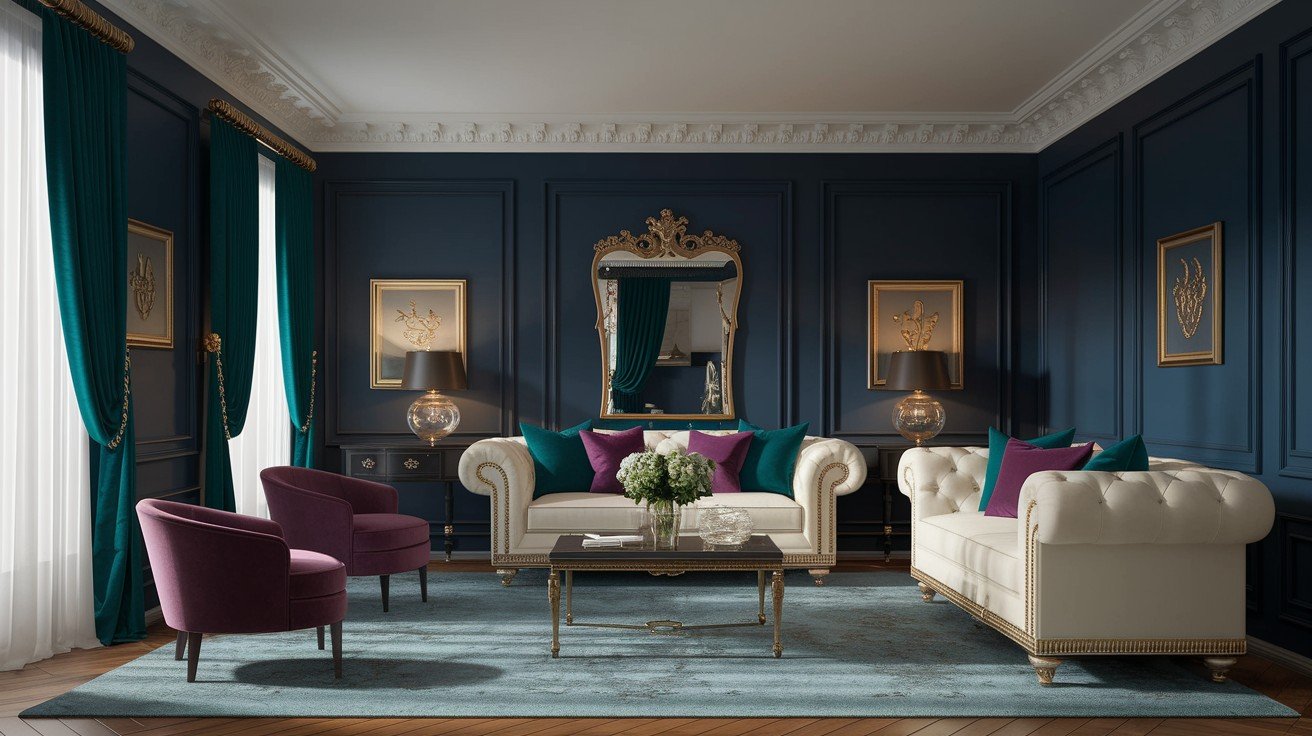
Your color palette sets the foundation for everything else. Modern baroque works best with deep, saturated hues that command attention. Navy blue creates instant sophistication. Emerald green adds richness without being too dark. Plum brings warmth while maintaining drama.
Balance these bold choices with neutral anchors. Beige walls let your statement pieces shine. Ivory upholstery brightens the space without competing with darker elements. Grey provides a modern edge that keeps the look fresh.
Metallic accents tie everything together. Gold remains the classic choice, adding warmth and luxury. Bronze offers a more subtle approach. Chrome brings contemporary coolness to traditional elements.
Pro tip: Stick to 2-3 main colors to avoid chaos.
Step 2: Focus on Statement Furniture
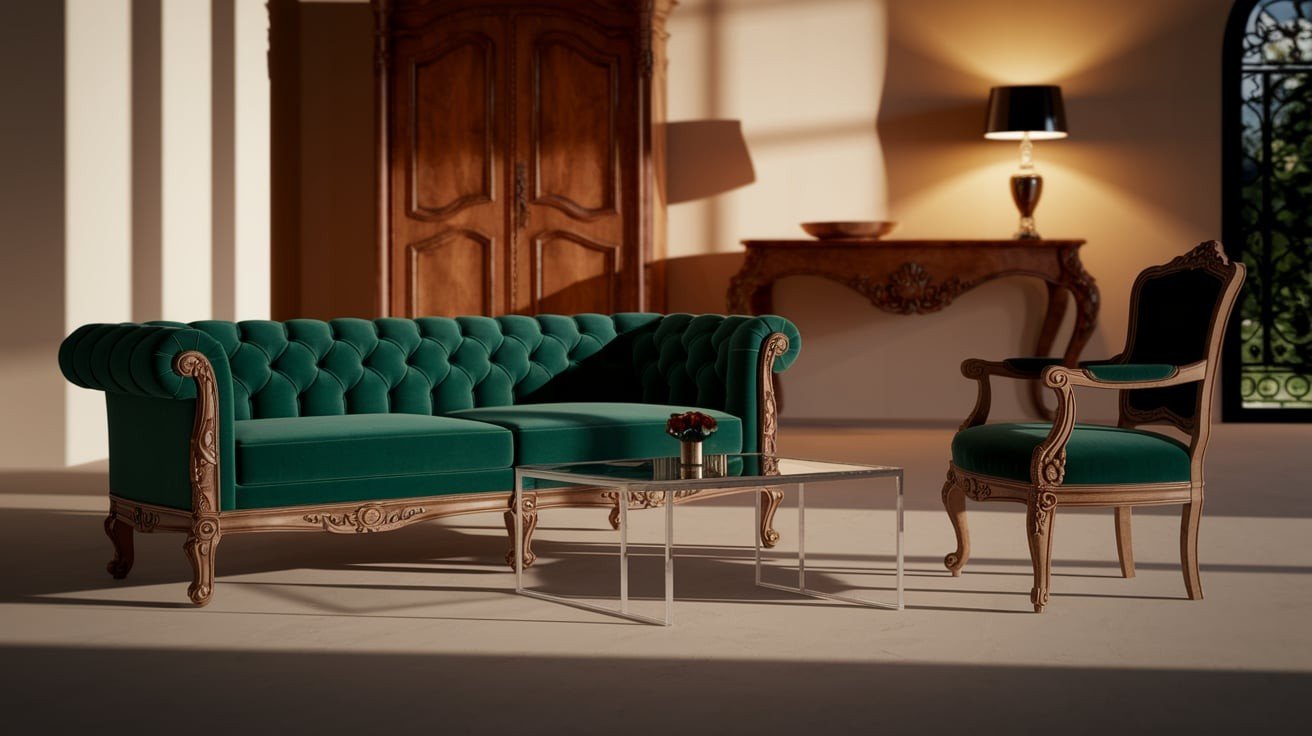
Look for pieces that combine traditional craftsmanship with contemporary proportions. Tufted velvet sofas provide comfort while maintaining visual interest. Carved wood details add texture without overwhelming the space.
Your anchor pieces deserve the most attention. A baroque headboard transforms an entire bedroom. Ornate chairs work well as accent seating. Console tables with curved legs add function and style.
Pair an antique armoire with a sleek modern lamp. Place a vintage carved chair next to a glass coffee table.
Tip: One statement piece per room is enough.
Step 3: Layer with Luxe Fabrics and Patterns
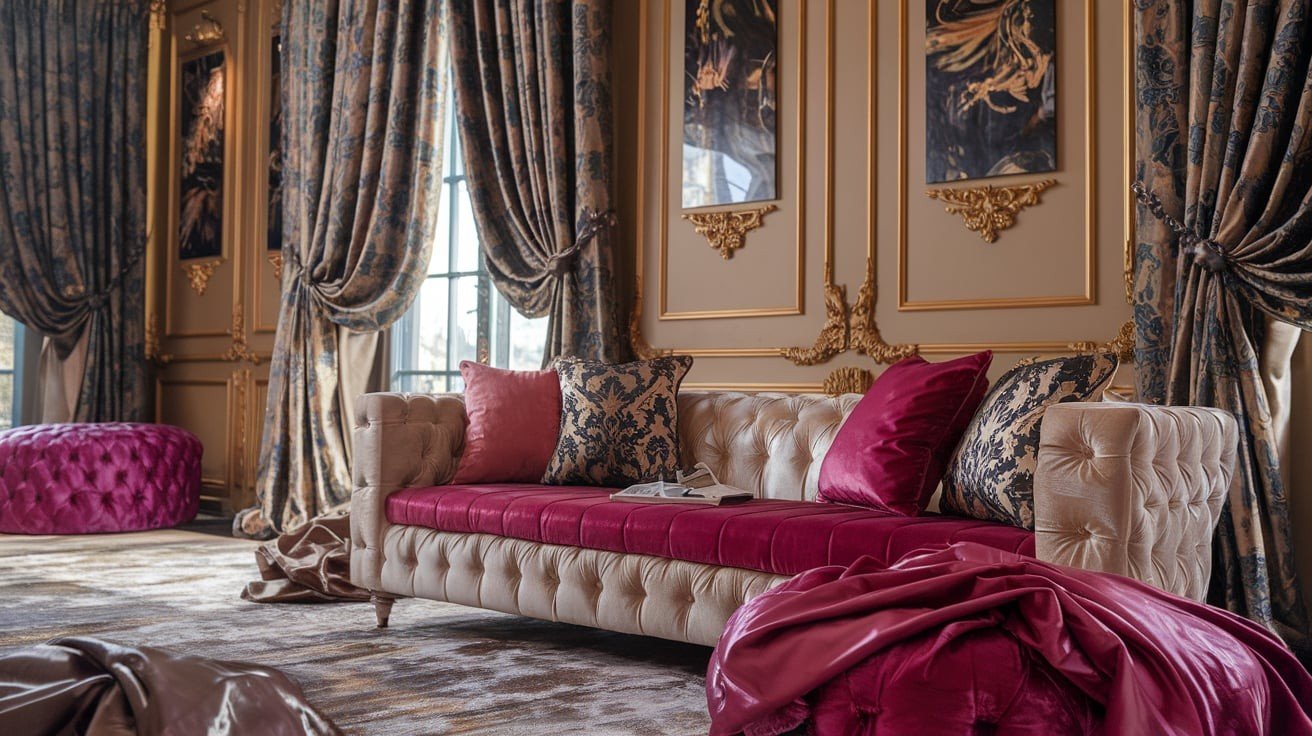
Focus on three main applications: window treatments, throw pillows and upholstery. Silk brings natural luster and flows beautifully in curtains. Velvet adds depth and richness to upholstery. Damask patterns reference traditional baroque while working in contemporary spaces.
Heavy curtains in rich fabrics frame windows dramatically. Mix a solid velvet pillow with a patterned damask. Add a silk pillow for a shiny contrast.
The key to mixing textures? Vary the scale and finish while staying within your color palette.
Step 4: Add Classic Architectural Details
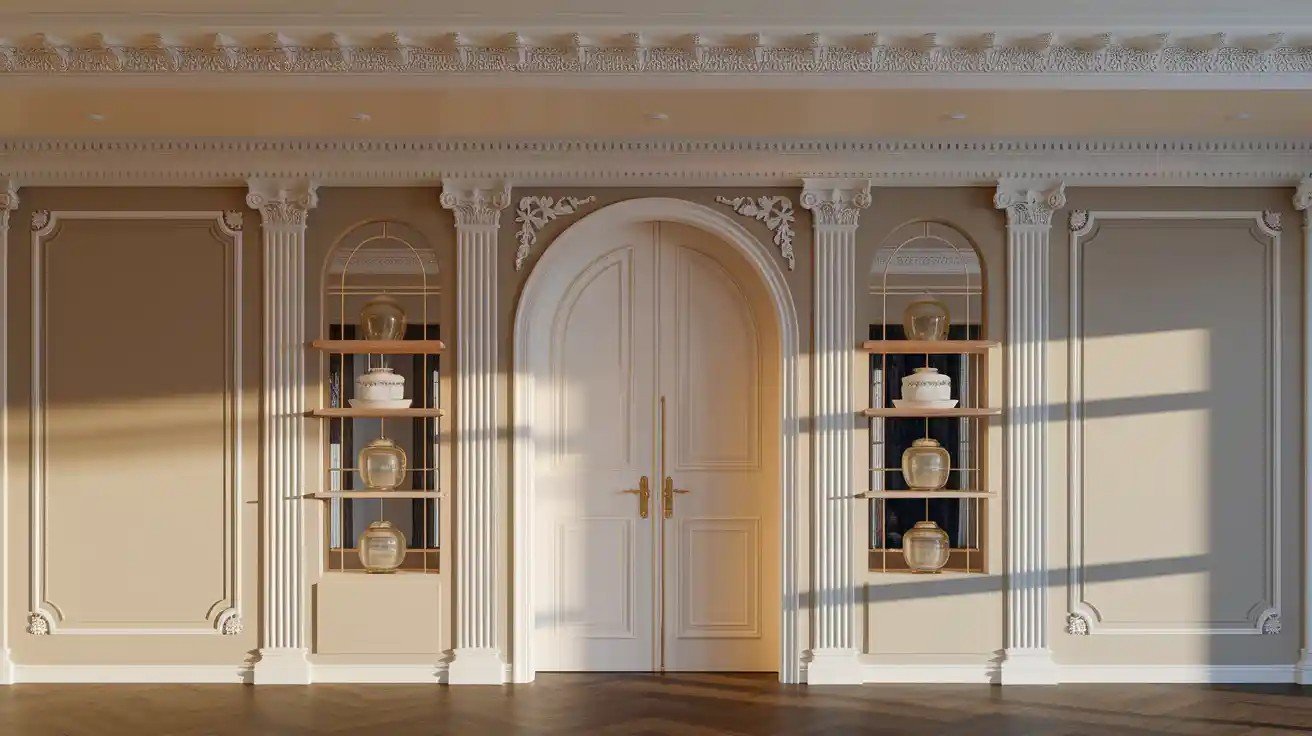
Wall moldings add instant sophistication without a major renovation. Crown molding frames the ceiling beautifully. Wainscoting on lower walls creates visual interest and protects surfaces.
You don’t need expensive custom millwork. Faux trim options look convincing and cost much less. Peel-and-stick molding works for renters or quick updates.
Consider arched mirrors, decorative columns flanking doorways, and built-in shelving with carved brackets.
Focus on one or two architectural elements per room.
Step 5: Add Baroque-Inspired Decor
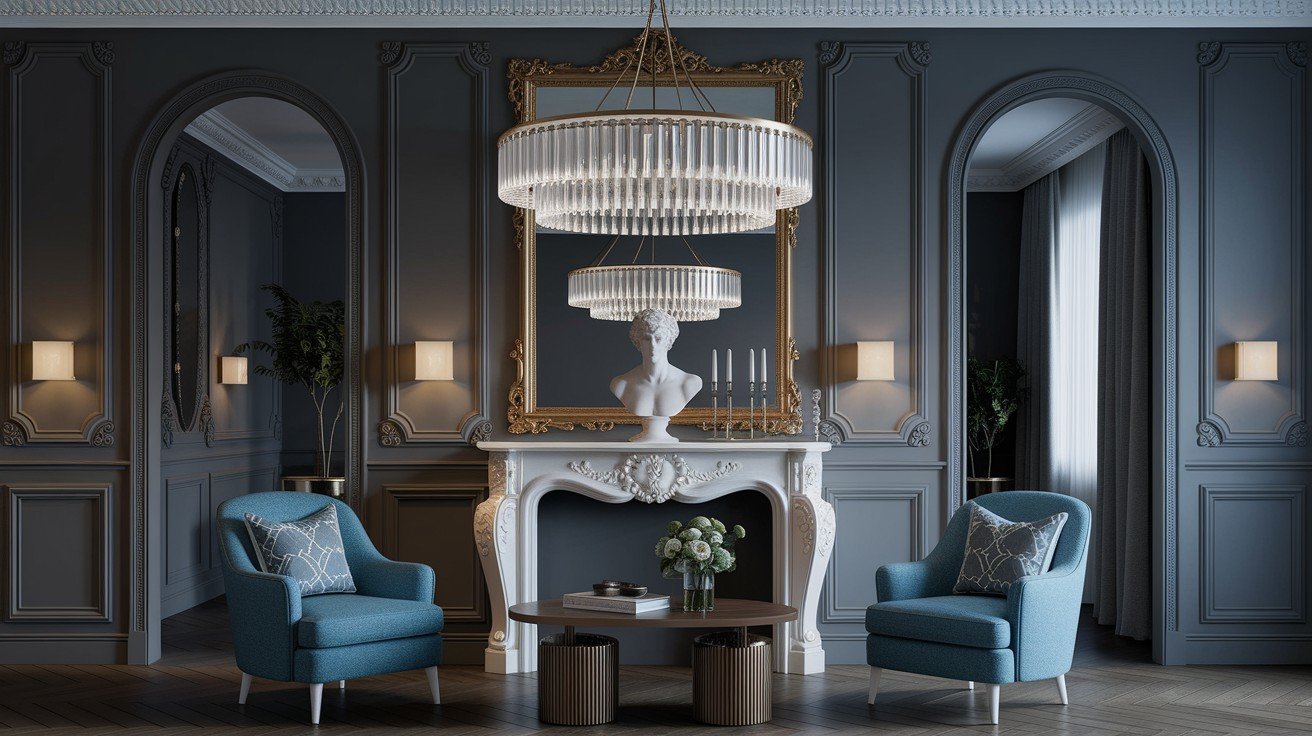
Gilded mirrors reflect light and create the illusion of more space. Choose designs with ornate frames but avoid going too large, proportion matters.
Crystal chandeliers remain the final baroque statement piece. Modern versions offer LED bulbs and dimmer compatibility.
Bust sculptures add classical references without overwhelming them. Place them on mantels, bookshelves, or console tables.
Art selection requires balance. Dramatic oil paintings work well as focal points. Oversized frames make even simple prints look important.
Step 6: Balance Drama with Simplicity
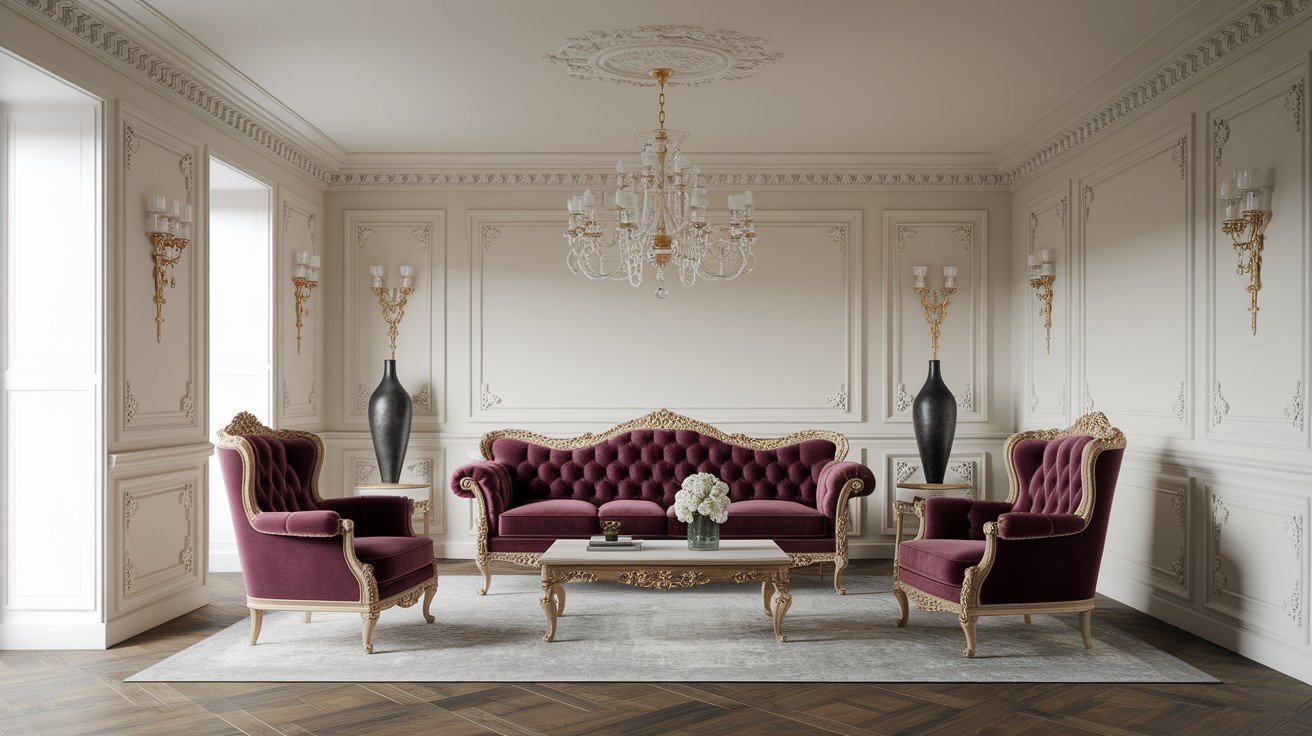
Leave breathing room around your statement pieces. Open space creates a contrast that makes ornate elements more impactful.
Think of your room as a stage. Your statement furniture and key accessories are the stars. Everything else should be supported without competing.
Incorporate modern elements to keep the look current. Sleek table lamps provide task lighting without visual weight. Minimal art pieces balance ornate furniture.
The 70-30 rule works well: 70% simple, clean elements and 30% ornate, decorative pieces.
Step 7: Personalize the Look
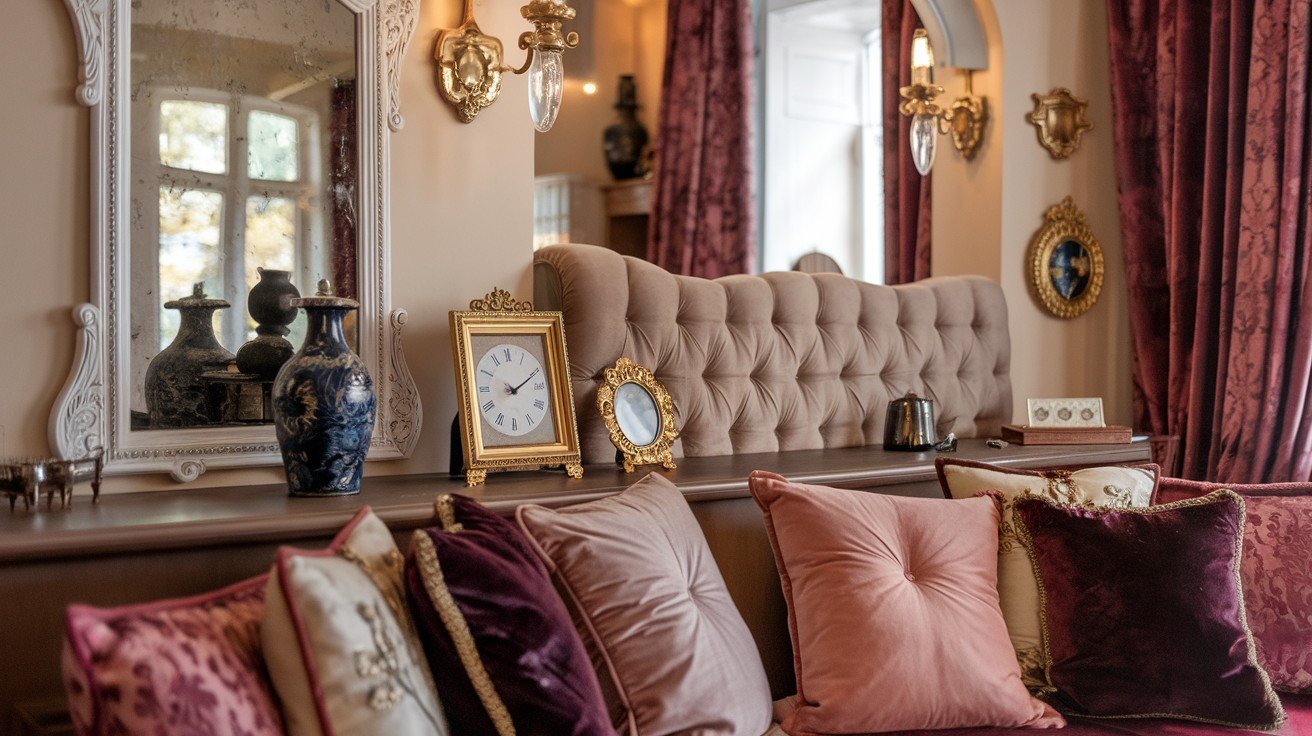
Your modern baroque space should reflect your personality, not copy a magazine. Blend in family heirlooms or pieces with personal meaning.
DIY projects let you customize baroque elements affordably. Convert a plain mirror with decorative molding. Add button tufting to a simple headboard.
Modern touches keep the style relevant: hide technology inside ornate cabinets, use apps to control lighting and music, and choose minimal layouts that accommodate daily life.
Modern Baroque Room-by-Room Tips
- Living Room: Create a luxurious seating area with a tufted velvet sofa as your anchor piece. Add a crystal chandelier and gilded mirror. Balance with simple side tables and minimal art.
- Bedroom: Use a high-drama upholstered headboard as your centerpiece. Layer luxurious bedding in rich colors. Add a vintage chair and an ornate lamp for reading.
- Dining Area: Pair a carved wooden table with plush upholstered chairs. Hang a chandelier centered over the table. Add a sideboard with decorative hardware.
- Entryway: Greet guests with a large gilded mirror and dramatic lighting. Add a console table with curved legs. Keep the floor clear for maximum impact.
Conclusion
Mastering modern baroque interior design requires understanding balance. You’re not recreating Versailles—you’re adapting its best elements for contemporary living. The process involves choosing bold colors, selecting statement furniture, and layering luxurious textures.
Remember that restraint creates impact. One ornate piece per room carries more weight than multiple competing elements. Mix traditional baroque pieces with modern simplicity for spaces that feel both grand and livable.
The beauty of this style lies in its flexibility. You can start with small changes and build gradually. Your space will develop character over time as you add carefully chosen pieces.
Start small—add a gilded mirror or velvet chair—and build your baroque kingdom from there. Each element should serve both function and beauty in your daily life.
Frequently Asked Questions
What is the cost of creating a modern baroque interior?
Costs vary widely depending on your approach. You can start with affordable accessories like mirrors and pillows for under $200, or invest in statement furniture pieces that cost several thousand dollars. Focus on one room at a time to spread costs.
Can modern baroque work in small spaces?
Yes, but requires careful planning. Use fewer, larger statement pieces rather than many small ones. Mirrors help create the illusion of space. Choose furniture with legs to maintain visual flow.
How do I avoid making my space look like a museum?
Mix modern elements with baroque pieces. Include personal items and family photos. Ensure your space serves your daily needs, not just visual appeal. Live in the space, don’t just decorate it.
What’s the biggest mistake people make with baroque style?
Overdecorating. Many people think baroque means filling every surface with ornate items. Modern baroque requires editing and restraint. Let your statement pieces breathe and shine.
Can I rent and still achieve this look?
Absolutely. Focus on furniture, fabrics, and removable accessories. Use peel-and-stick molding, temporary wallpaper, and lighting to create architectural interest without permanent changes.

